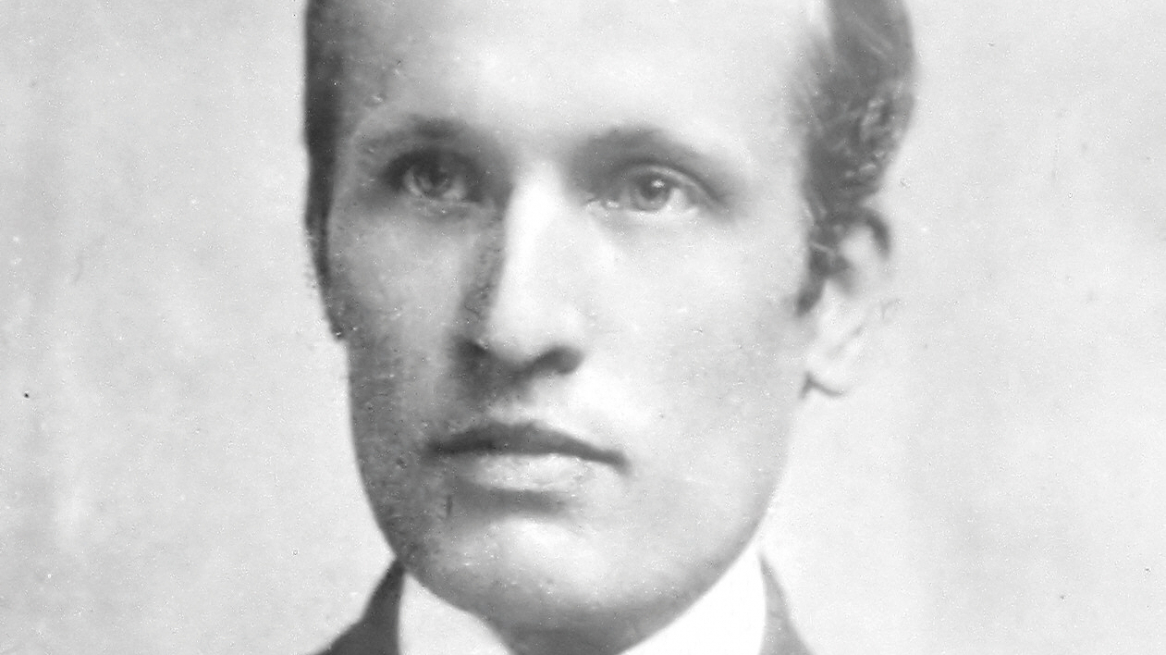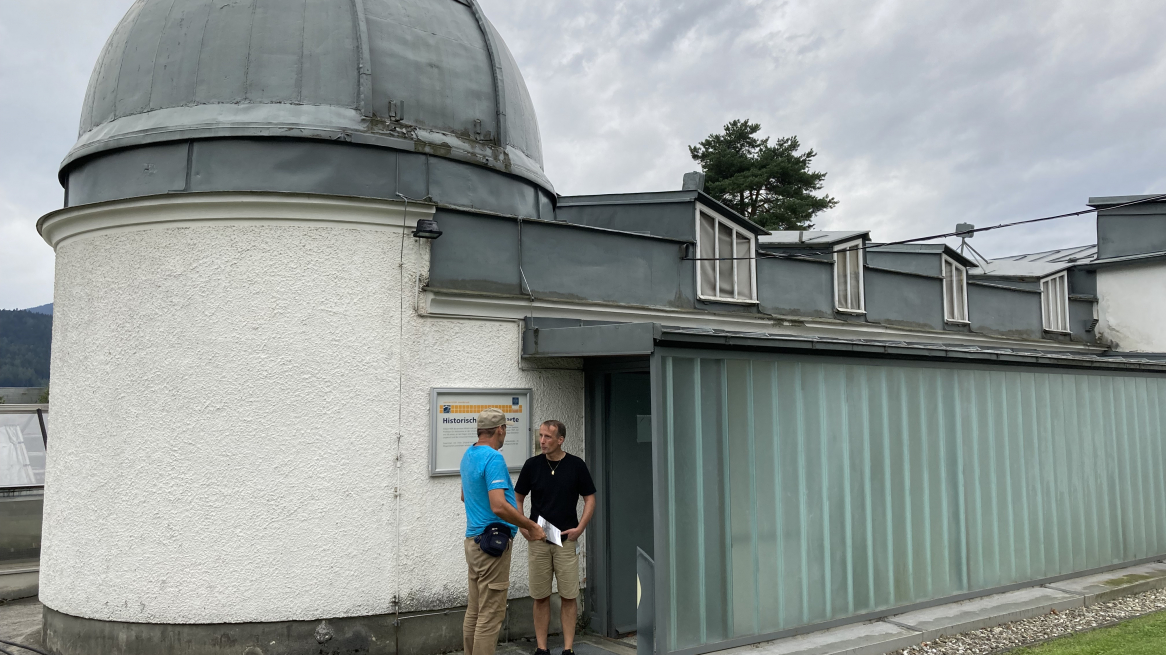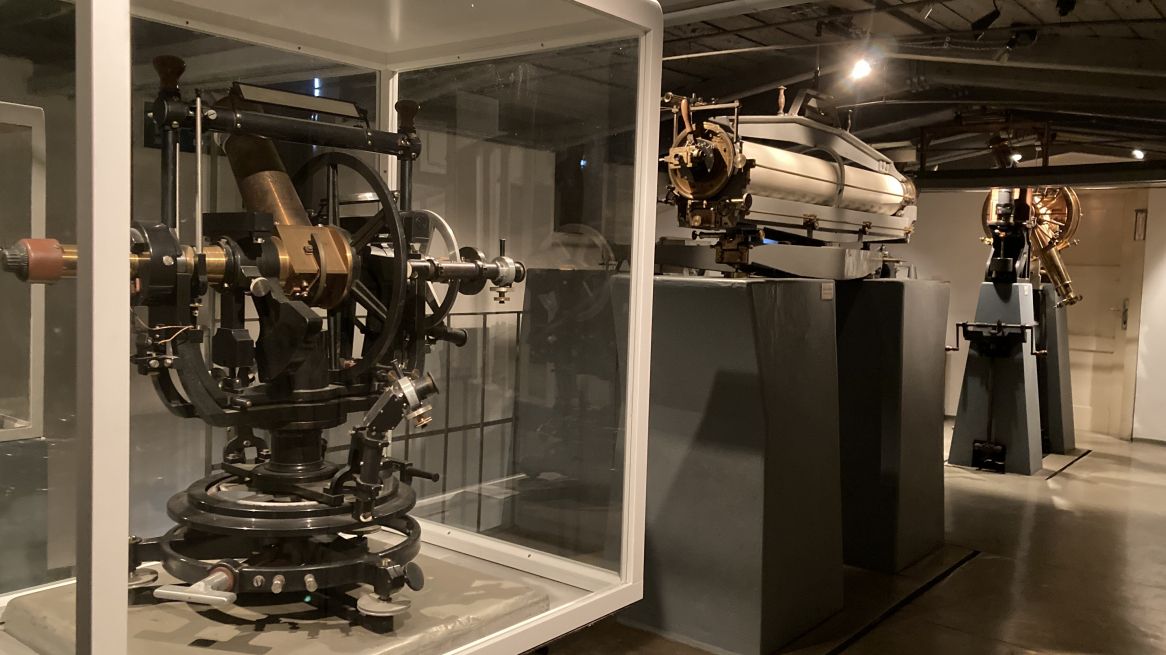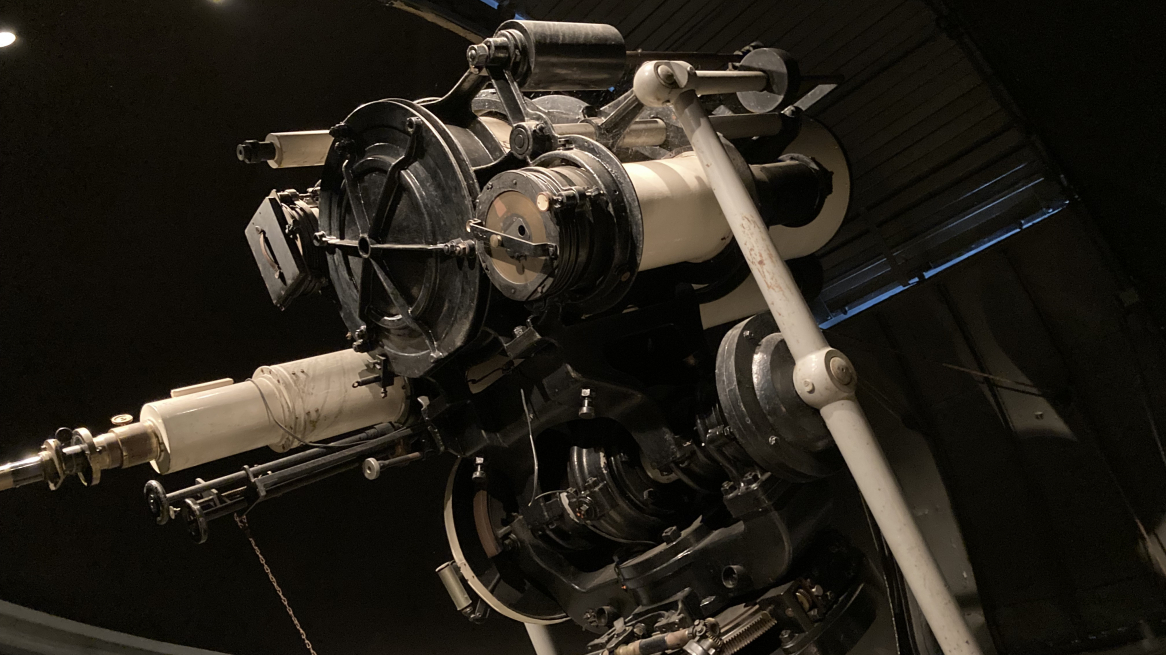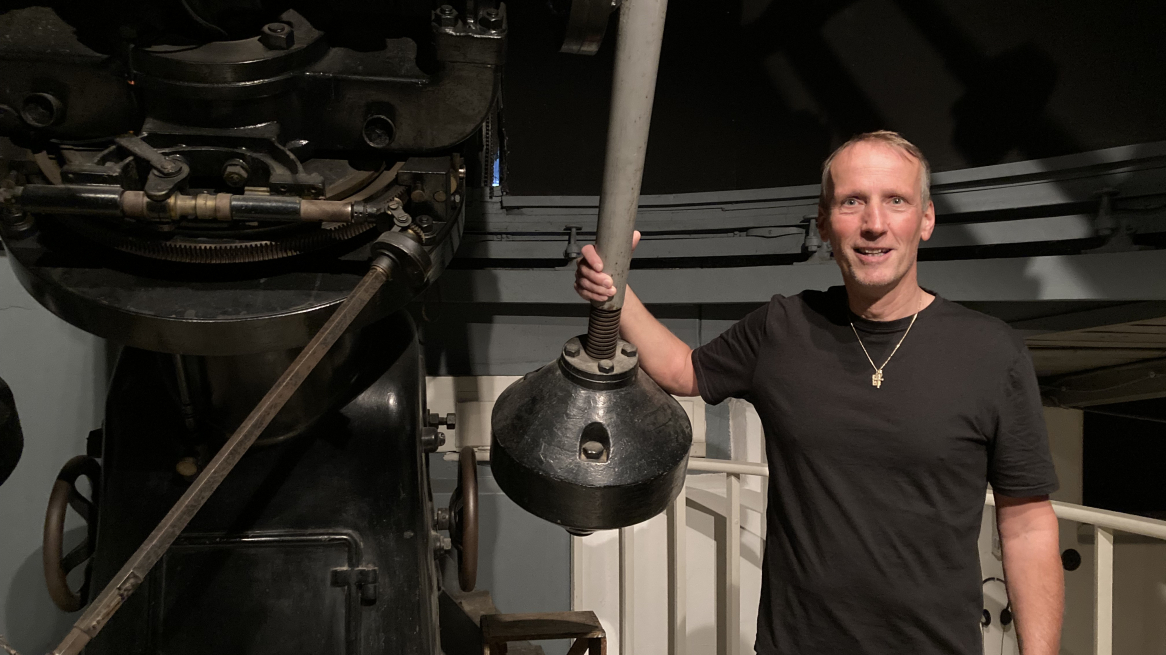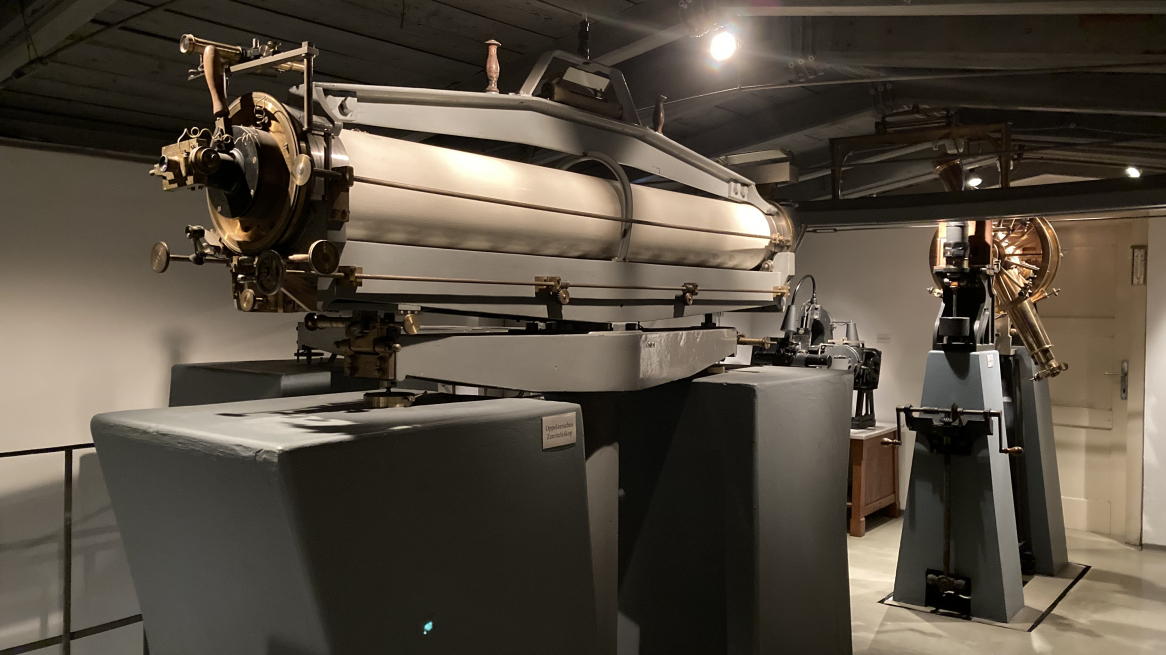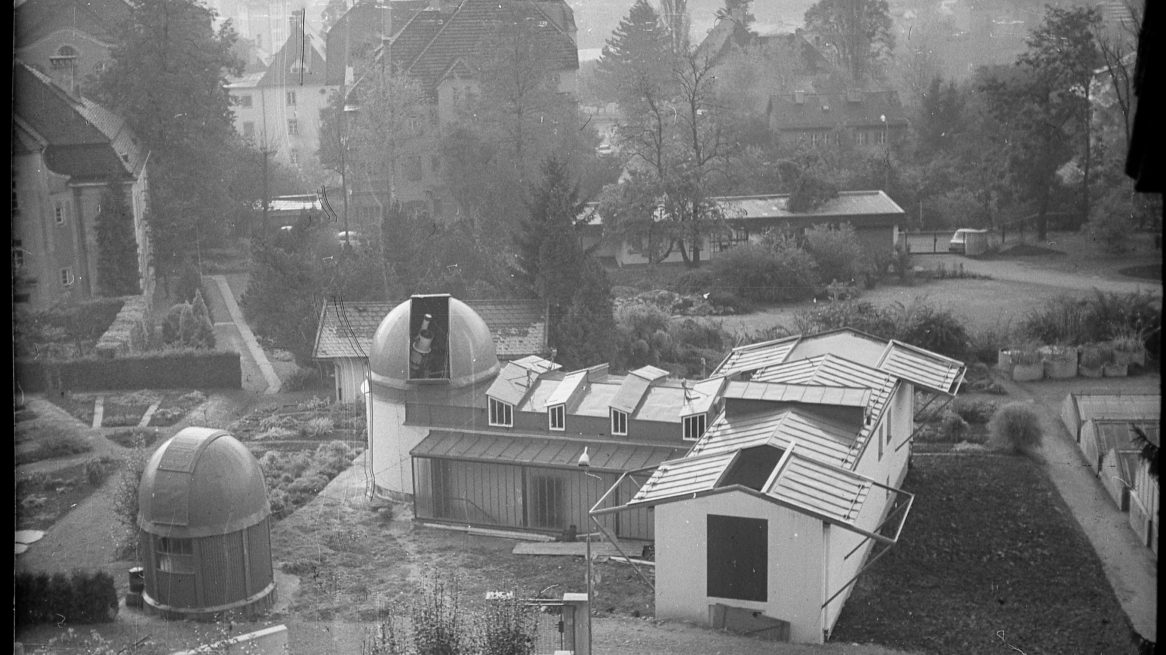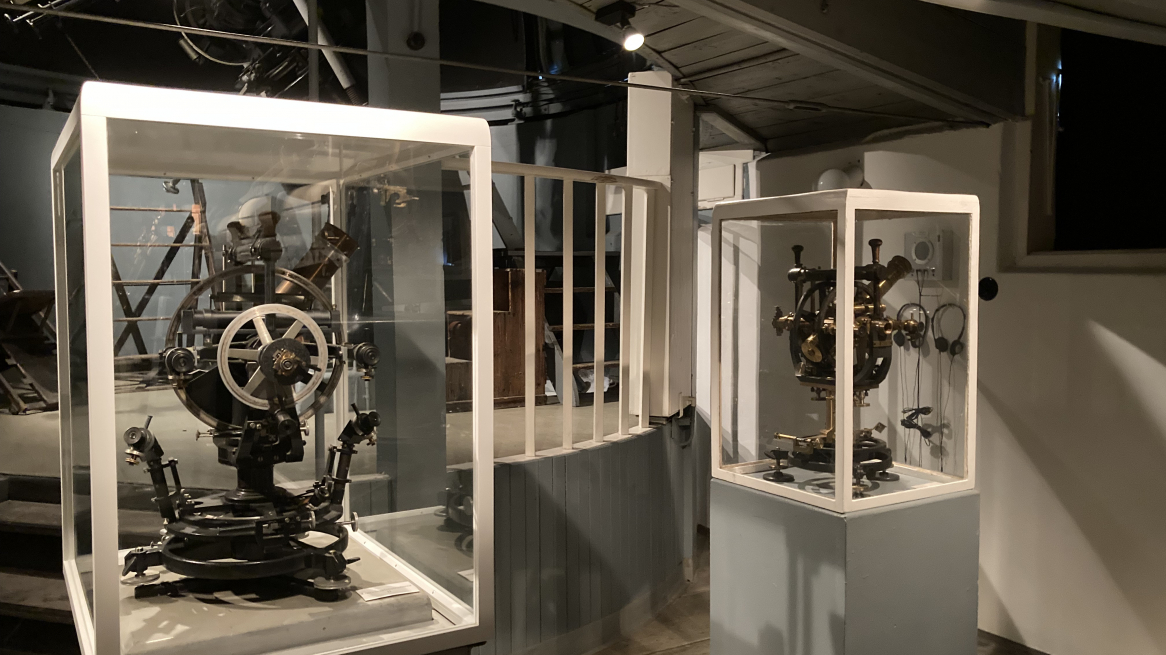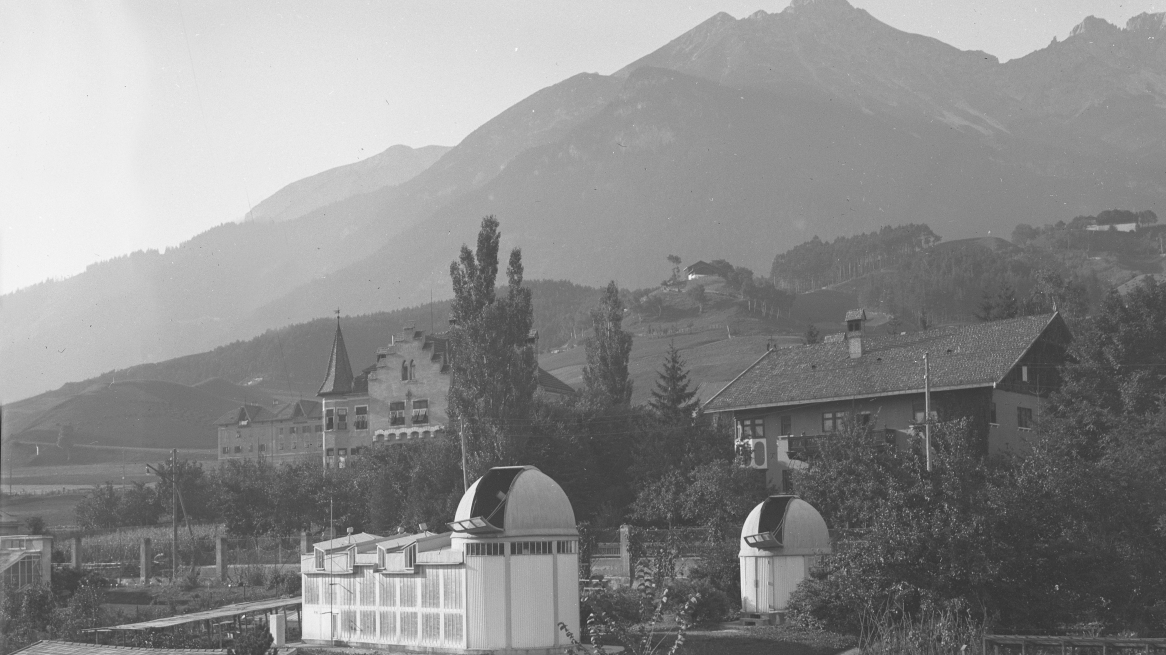
It is one of Innsbruck's hidden beauties - the Historic Observatory of astronomer Egon von Oppolzer in the district of Hötting. A gem that definitely belongs on the list of "Must see!" in Innsbruck.
Crystal clear night sky
When it was built, the location was perfect. The area around today's Sternwartestraße was on the outskirts of the city, in a largely undeveloped area. Sufficient space, therefore, for the personal project that Egon von Oppolzer wanted to tackle: a private observatory. To build it, the Viennese astronomer, born in 1869, had accepted the chair for astronomy in Innsbruck in 1901. The conditions here seemed ideal to him: surrounded by mountains, with clean air and mostly clear night skies. Especially since Oppolzer only had to walk a few steps to get to his villa.
1929 - oldest preserved photograph of the historical observatory in Hötting, with the villa behind it on the right; photo © University of Innsbruck
Two unusual domes draw the eye today. They stand in the northeast of the Botanical Garden - also a wonderful, "hidden" spot in Innsbruck, to which I have dedicated a post here.
Historical observatory
For the time, the 1903/04 construction was a small sensation. Oppolzer built his observatory according to the latest technical findings. It comprised a main building with two floors and a free-standing dome. Thin walls made of glass and sheet metal enabled a rapid temperature equalization between the outside and the inside. What was important to obtain good measurement results. The equipment stood on concrete pedestals that did not touch the other parts of the building. This prevented vibrations from being transmitted to the highly sensitive devices.
In a time capsule
Since the observatory was only a few steps away from his villa, Oppolzer did not install a warming room or sanitary facilities - these were to be added later. However, he was not able to use his observatory for a long time. The scientist died in 1907 as a result of blood poisoning. He was only 38 years old.
Three years later, the observatory became the property of the University of Inn sbruck and was called "University Observatory Innsbruck" from then on. While additions changed the exterior appearance, the interior remained almost untouched.
Almost like the time when Egon von Oppolzer observed the night sky from here. The furnishings and instruments date from that time. And when you enter the observatory, you get the idea that the scientist could turn the corner, sit down on his wooden chair and look through the telescope.
Fascinating instruments
When visiting the observatory, the star among the astronomical instruments and devices is of course immediately noticed. It stands somewhat elevated directly under the dome: the telescope with a mirror diameter of 40 centimeters. One of the first telescopes manufactured by the Zeiss company, the most light-sensitive and the first large reflecting telescope in the Habsburg monarchy, as the audio guide reveals.
Display cases contain two originally transportable devices with angles indicated in horizontal and vertical axes. "This made it possible to read the places and planets in the entire sky and not just in their southernmost position," explains Friedrich Vötter.
Those who enjoy his guided tour no longer need an audio guide. The information gushes forth. His enthusiasm for this gem is unmistakable and unmistakable.
Of course, there are numerous anecdotes about the observatory and its visitors. Because they can't get out of their amazement once they have found their way here. Even many locals would not know what a treasure is hidden in the Sternwartestraße in Hötting. A time capsule, says Vötter.
At the zenith
One is immersed in astronomy as it was practiced at the beginning of the 20th century. History of science to touch, to perceive with all senses. Oppolzer himself developed or refined devices. On display, for example, is the two-meter-long zenith telescope he constructed. It was mounted horizontally and served - like the meridian tel escope next to it - to determine time and star positions. Stars in the area of the zenith, i.e. vertically above the telescope, were recorded. This device was in use until the 1960s, when more modern methods came into use.
Celestial body in sight
A very special instrument is also the blink comparator standing in the corner. It was used to evaluate the photographic plates taken during the celestial observations. In the case of two photographic plates of the same celestial region taken on different nights, it shows our eye those objects that have moved on in the sky in the meantime.
With the help of such devices, small planets could be detected, but also stars that have a variable brightness. They "flashed" on the photographic plates when viewed through the comparator. Today, computer technology replaces the evaluation of images from space.
Must see!
Only recently, detailed images of the universe and the planet Jupiter enchanted not only the experts. They were taken by NASA's "James Webb" telescope. Incidentally, the Innsbruck astrophysicist Nadeen B. Sabha is involved in one of the research projects.
Fascinating is also the view into the history of science, which the observatory in Hötting still gives us today. For me, one of those gems that belong to the "Must see!" in Innsbruck. And of course, the Oppolzer Observatory is also in my book "111 places in Innsbruck that you must have seen", published by Emons Verlag.
1970 - View (from the north) of the observatory after the extension; photo © University of Innsbruck
The Historical Observatory is located in the northeast of the Botanical Garden. Access is possible via Sternwartestraße 13 and the Botanical Garden, Botanikerstraße 10.
Directly at the entrance to the Botanical Garden is the bus stop "Botanikerstraße".
Historical Observatory
Observatory street 13, 6020 Innsbruck
Contact persons: Friedrich Vötter, Tel. +43 512 507-52055, or Amela Music (Institute for Astro- and Particle Physics), Tel. +43 512 507-52101
Opening hours: Thursday 15:30-17:30, current info at www.uibk.ac.at
Information about the opening hours of the Botanical Garden can be found here. And if you'd like to know what else not to miss in Innsbruck, check out the Innsbruck Tourism website.
Photos, unless otherwise stated: © Susanne Gurschler
Rate this article
Show me the location on the map
Innsbruck has captured her heart, and the view of the Nordkette mountains soothes her soul. A journalist, non-fiction author, bookworm, amateur photographer, dog owner and mountain walker #ghostsofinnsbruck
Similar articles
The mountains around Innsbruck are not only known for their breathtaking beauty, but also for their living…
Beautiful and good: the noble product world Anyone in Tyrol looking for high-quality regional products in attractive…
What do you do when the highest elevation near your home town is only around 150 meters?…
"If the bee disappears from the earth, humans will only have four years to live. No more…

